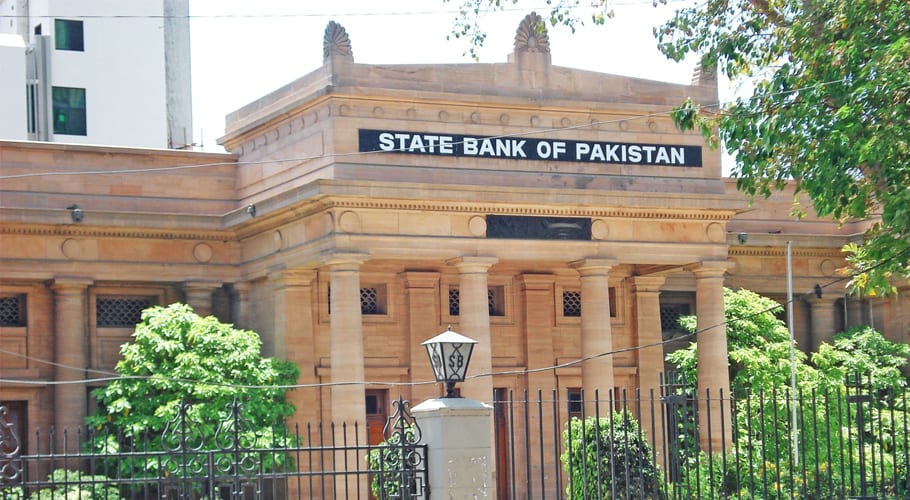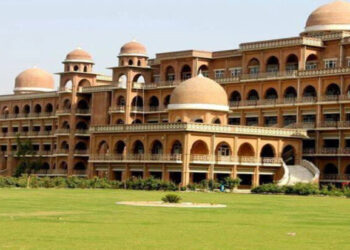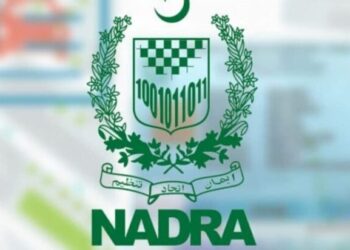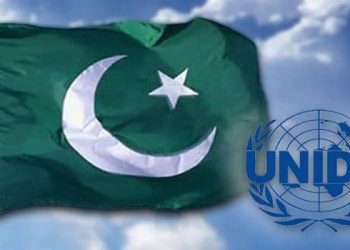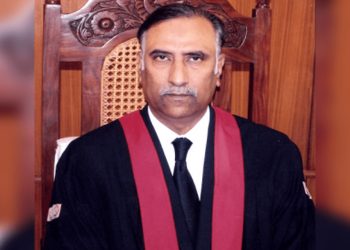KARACHI: The State Bank of Pakistan (SBP) announced on Friday that the Monetary Policy Committee (MPC) has decided to keep the interest rate at 7 percent as it sought to balance economic headwinds from the coronavirus epidemic with the need to curb inflation.
SBP said in a statement said, “The Monetary Policy Committee felt that the existing accommodative stance of monetary policy remained appropriate to support the nascent recovery while keeping inflation expectations well-anchored.”
It is the third time that the central bank has kept its main policy rate unchanged after cutting it by 625 basis points, down from 13.25pc, at the time the global pandemic hit its economy last February.
The central bank also provided guidance that it planned to keep interest rates unchanged in the near term in the absence of “unforeseen developments”, adding that any changes to interest rates as the economy recovered would have to be “measured and gradual”.
#MonetaryPolicy Committee decides to maintain the policy rate at 7 percent. For complete statement: https://t.co/MM53TMWkr5 pic.twitter.com/u0SeRCyZHt
— SBP (@StateBank_Pak) January 22, 2021
The result, which was largely in line with analysts’ expectations, was in part due to some domestic economic improvement with the bank saying there were upside risks to the projected 2pc growth projected for the 2021 financial year, which ends in June. The bank has also had to balance the need to provide stimulus throughout the coronavirus pandemic with tempering inflation.
Price hikes have hit consumers hard over the past year through inflation has eased since hitting a five-year high of more than 9pc late last year, with the country posting 8pc consumer price inflation in December. The MPC noted, however, that domestic recovery has gained some further traction since the committee’s last meeting in November 2020.
The MPC noted that “economic activity data and indicators of consumer and business sentiment have shown continued improvement” and while the inflation rate may increase due to an increase in utility prices, the rise would be transient.
“Inflation is still expected to fall within the previously announced range of 7-9pc for FY21 and trend toward the 5-7pc target range over the medium-term,” the statement read. This time, due to “Covid related uncertainties” the MPC also issued forward guidance “to facilitate policy predictability and decision-making by economic agents”, the statement added.
After the committee’s meeting, addressing a press conference SBP Governor Reza Baqir said “In the near future interest rate will remain the same and if, in the future, there is a chance it wouldn’t be like [in the past] when the interest rate would see a sudden and drastic change. The change would be introduced in an orderly manner,” he added.
The central bank was able to give near-term future guidance on rates, which was a departure from practice, due to the improvement and confidence in the economy, Baqir said. The governor gave three reasons for the guidance, one of which was the marked improvement in the current account balance, which has been in the deficit over the past few years.
According to SBP data last month, the current account balance had recorded a record surplus of $447 million in November as opposed to a deficit of $326m which was recorded in the same period in 2019.
The second reason, Baqir said, was that the “institutional change” through which improvements were introduced in the current account. He explained that the authorities had decided to make an “institutional change” which was to switch to a market-based exchange rate from a controlled one.
He said that there were questions and fears that transition may lead to skyrocketing dollar prices. The third reason, Baqir said, was that despite being put to the test by the economic upheaval caused by Covid, the market-based exchange rate had emerged successful.
“Not only our economy but our flexible exchange rate passed this test successfully” despite Covid, the governor told reporters. He also noted that Pakistan’s foreign reserves had risen from $7.2 billion to around $13bn. He denied that the rise was due to loans borrowed by the government.
“The net contribution of foreign borrowing was zero or in the negative. Meaning, this increase in reserves was not only seen in total reserves but also in net international reserves,” Baqir explained.
We’re LIVE on #Facebook: Watch the press conference on #MonetaryPolicy @ https://t.co/xUqP6sXp3w
— SBP (@StateBank_Pak) January 22, 2021







